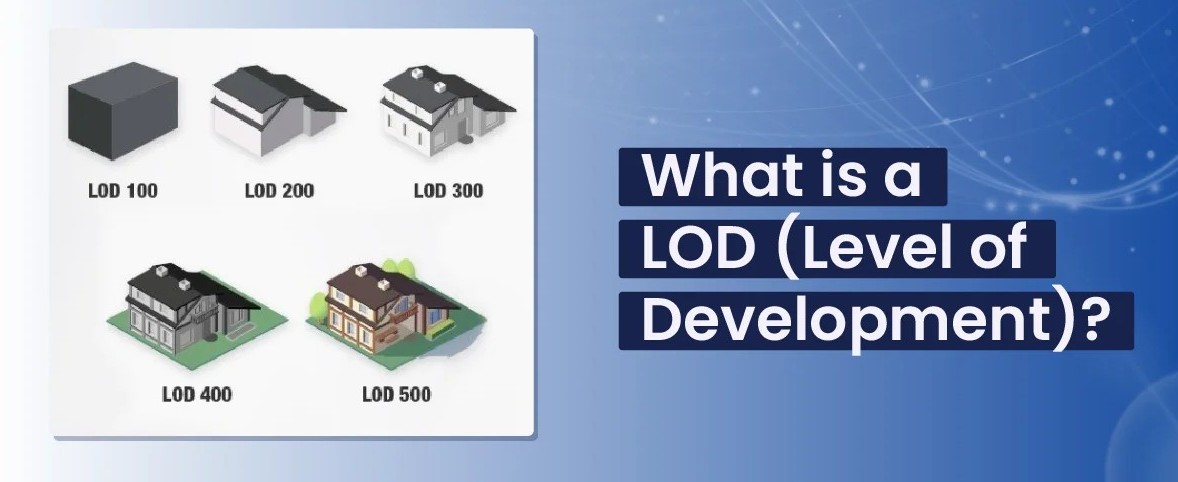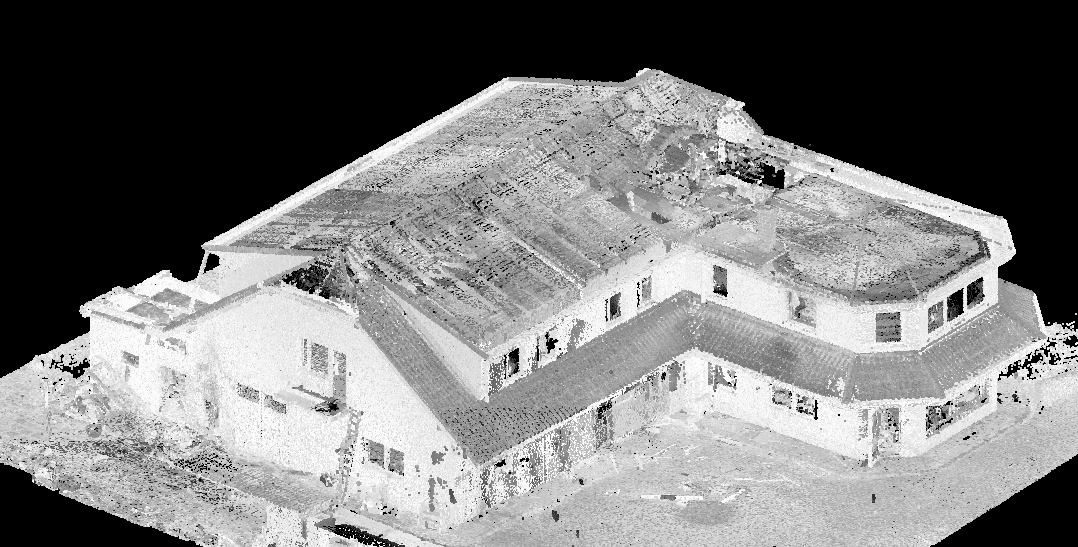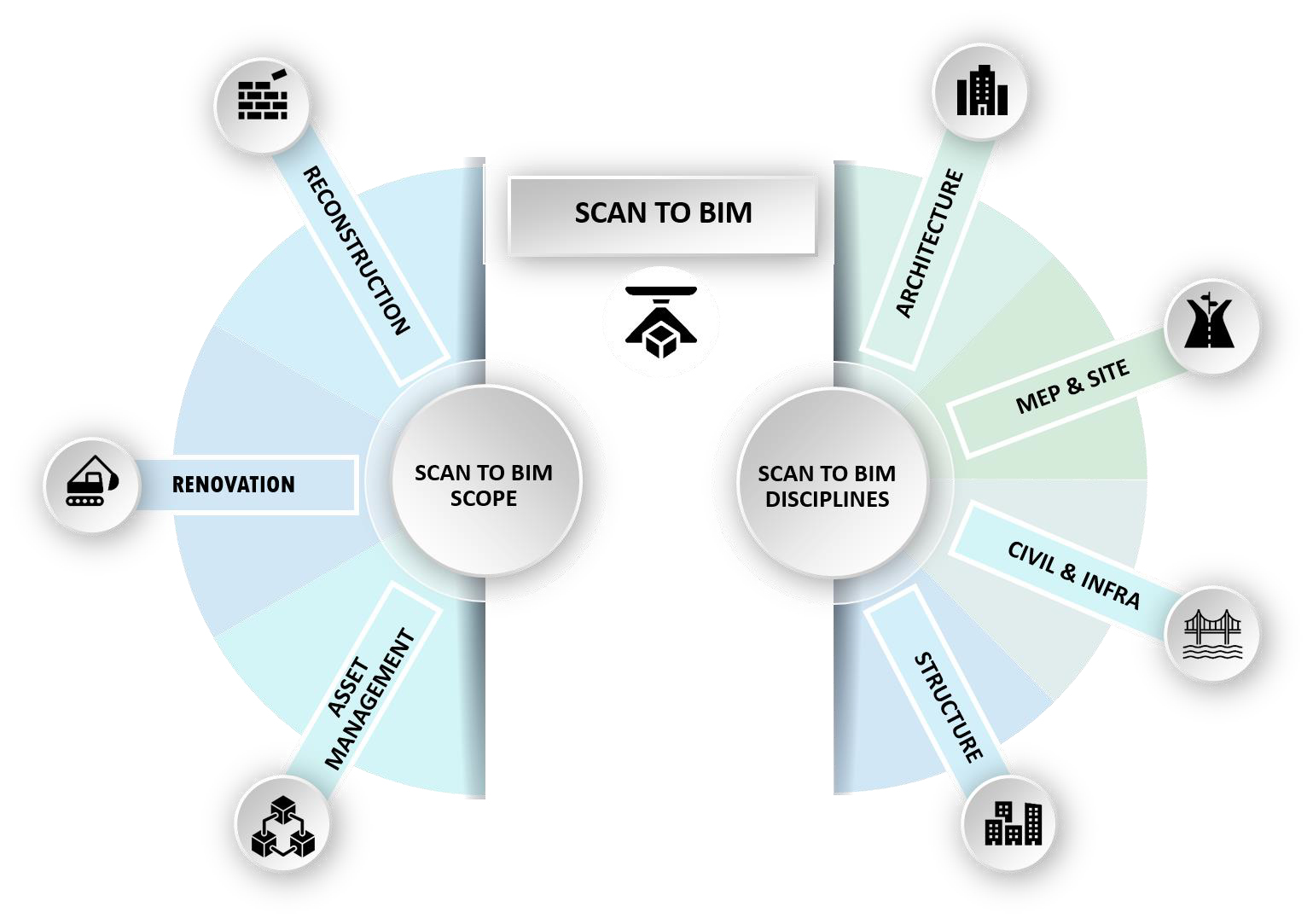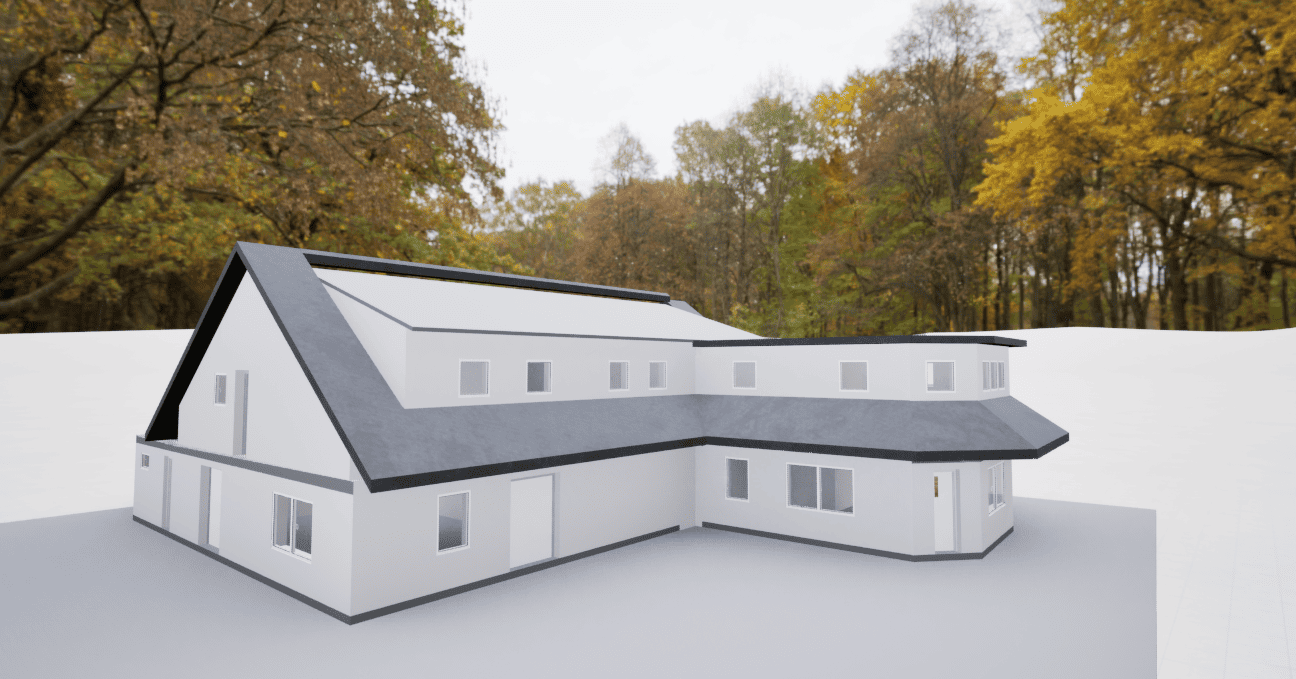Challenges
The building had irregular roof geometry and multiple extensions, making accurate modeling complex.
Existing as-built drawings were outdated or incomplete, requiring full reliance on laser scan data.
Integrating point cloud data from multiple scans while maintaining precise spatial alignment.
Capturing and modeling interior and exterior details such as stairs, openings, and façade elements with limited access in some areas.
Ensuring the LOD 200 model met project standards while balancing speed of delivery and accuracy.
Coordinating data to produce clear, actionable outputs for architects, engineers, and clients.
Our Approach
1. Comprehensive Site Survey
Conducted 3D laser scanning of interiors and exteriors, capturing all architectural and structural elements. Ensured high-density data coverage for walls, floors, roofs, stairs, windows, doors, and exterior features.
2. Point Cloud Processing
Registered, cleaned, and optimized scan data into a single, unified point cloud.Prepared the dataset for smooth Revit modeling while preserving dimensional accuracy.
3. Revit Modeling (LOD 200)
Created generic walls, floors, roofs, windows, doors, stairs, and exterior features in Revit at approximate dimensions. Maintained alignment with point cloud data for consistency and accuracy. Applied BIM standards, best practices, and modeling protocols.
4. Quality Assurance & Verification
Checked all model elements against the point cloud to ensure high spatial accuracy. Produced floor plans, sections, and elevations directly from the BIM model for immediate use.








